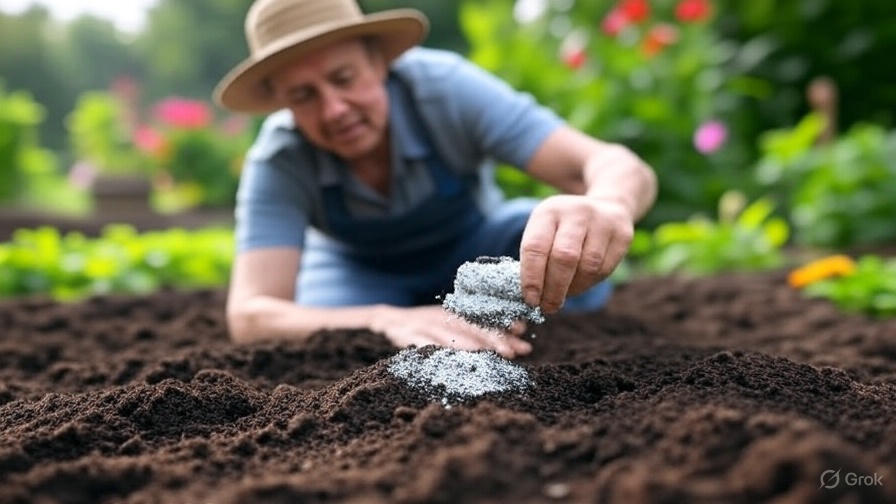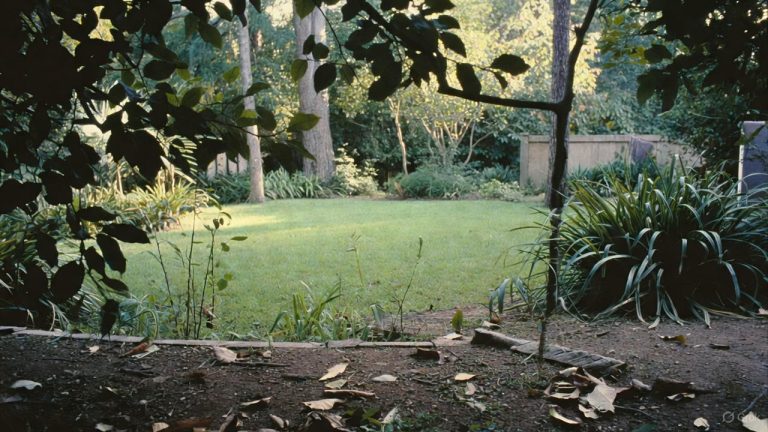How to Add Calcium to Soil?
Every gardener faces the challenge of maintaining healthy soil, and calcium plays a crucial role in this process. Your plants depend on adequate calcium levels for strong cell walls, proper root development, and optimal nutrient uptake. Without sufficient calcium, even the most carefully tended gardens can struggle with stunted growth, blossom end rot, and poor fruit development.
Soil calcium deficiency affects millions of gardens across the country, yet many gardeners remain unaware of this silent problem until their plants show visible symptoms. The good news is that you can easily correct calcium deficiencies with the right knowledge and techniques.
Why Calcium Matters for Your Soil and Plants
Calcium serves as the foundation for healthy plant growth. This essential macronutrient strengthens plant cell walls, making stems sturdier and fruits firmer. Plants use calcium to regulate water movement, activate enzymes, and maintain proper pH levels in their tissues.
Your soil benefits from calcium in multiple ways. Calcium improves soil structure by binding clay particles together, creating better drainage and air circulation. This process, called flocculation, transforms heavy clay soils into more workable growing mediums. Sandy soils also benefit from calcium additions, which help retain moisture and nutrients that would otherwise wash away.
Plants absorb calcium through their root systems, but the nutrient must dissolve in soil water first. Acidic soils often contain plenty of calcium, yet plants cannot access it because low pH prevents proper dissolution. This explains why lime applications work so effectively – they raise pH while providing calcium.
Signs Your Soil Lacks Calcium
Recognizing calcium deficiency symptoms helps you address problems before they severely impact your harvest. Tomatoes, peppers, and squash develop blossom end rot when calcium levels drop too low. This condition creates dark, sunken spots on the bottom of fruits, making them inedible.
Lettuce and cabbage may develop tip burn, where leaf edges turn brown and crispy. Apple trees produce bitter pit in their fruits, creating small, dark depressions in the flesh. Carrots become stunted with poor root development, while beans and peas show reduced pod formation.
Soil testing reveals the most accurate picture of your calcium levels. Home test kits provide basic information, but professional soil tests deliver detailed results including pH, calcium content, and recommendations for amendments. Most extension offices offer affordable soil testing services that include calcium analysis.
Visual soil indicators also suggest calcium deficiency. Compacted soil that remains soggy after rain often lacks sufficient calcium for proper structure. Plants that wilt easily despite adequate moisture may struggle with calcium-related water regulation problems.
Testing Your Soil’s Calcium Content
Professional soil tests measure calcium in parts per million (ppm) or as a percentage of the soil’s cation exchange capacity. Ideal calcium levels range from 1000-1500 ppm for most garden soils, though this varies based on soil type and crop requirements.
The calcium-to-magnesium ratio provides another important measurement. Healthy soils maintain a 3:1 to 5:1 calcium-to-magnesium ratio. When magnesium levels become too high relative to calcium, plants struggle to absorb both nutrients effectively.
pH testing complements calcium analysis because these factors interconnect closely. Soils with pH below 6.0 often bind calcium in forms plants cannot use. Conversely, very alkaline soils (pH above 7.5) may contain excessive calcium that interferes with other nutrient uptake.
Take soil samples from multiple locations in your garden for accurate results. Dig 6-8 inches deep and collect samples from at least five different spots. Mix these samples together before sending them for analysis.
Natural Methods to Increase Soil Calcium
Organic matter provides a gentle, long-lasting source of calcium for your soil. Compost, aged manure, and leaf mold slowly release calcium as they decompose. These materials also improve soil structure and water retention while feeding beneficial microorganisms.
Bone meal offers concentrated calcium along with phosphorus. Fish bone meal works particularly well for organic gardens, providing 20-25% calcium content. Apply 2-4 pounds per 100 square feet and work it into the top 6 inches of soil before planting.
Crushed oyster shells create an excellent slow-release calcium source for coastal gardeners. These shells break down gradually over several seasons, maintaining steady calcium availability. Inland gardeners can purchase oyster shell flour from garden centers or feed stores.
Wood ash from hardwood fires contains significant calcium levels, typically 25-45% calcium carbonate. Use wood ash sparingly because it raises pH rapidly. Apply no more than 10 pounds per 1000 square feet per year, and test pH regularly when using wood ash amendments.
Eggshells provide calcium in small quantities, though you need large amounts to make significant impacts. Clean and crush eggshells before adding them to compost piles or working them directly into soil around calcium-loving plants like tomatoes.
Commercial Calcium Products for Soil Amendment
Agricultural lime stands as the most common commercial calcium amendment. Ground limestone contains 35-40% calcium and raises soil pH simultaneously. Apply lime during fall or early spring, allowing several months for pH changes to stabilize before planting.
Calcitic lime works best for soils deficient in both calcium and pH. Dolomitic lime contains both calcium and magnesium, making it suitable for soils low in both nutrients. However, avoid dolomitic lime if your soil already contains adequate magnesium levels.
Gypsum (calcium sulfate) adds calcium without changing soil pH. This makes gypsum ideal for alkaline soils that need calcium but cannot tolerate further pH increases. Gypsum also improves soil structure in clay soils and provides sulfur, another essential plant nutrient.
Calcium chloride works quickly but requires careful application. This soluble calcium source can burn plant roots if applied too heavily. Use calcium chloride for emergency calcium deficiency corrections, applying light rates with plenty of water.
Liquid calcium products offer convenience for container gardens and small-scale applications. These concentrated solutions mix easily with water for quick soil application or foliar feeding. Follow label directions carefully to avoid over-application.
Application Methods and Timing
Broadcasting represents the most common calcium application method for large garden areas. Spread lime or other calcium amendments evenly across the soil surface, then till or rake them into the top 6-8 inches. This technique ensures good distribution and root zone contact.
Band application works well for row crops and established perennials. Apply calcium amendments in strips along planting rows or around individual plants. This method concentrates nutrients where plants need them most while reducing overall material requirements.
Side-dressing provides calcium to growing plants during the season. Apply calcium amendments in shallow trenches 4-6 inches from plant stems, then water thoroughly. This technique works particularly well for calcium-demanding crops like tomatoes and peppers.
Spring applications allow calcium amendments to dissolve and integrate before peak growing season begins. Fall applications give lime time to neutralize acidity over winter months. Avoid applying calcium during hot, dry weather when plant stress increases the risk of fertilizer burn.
Water calcium amendments thoroughly after application to begin the dissolution process. Light, frequent watering works better than heavy, infrequent irrigation for calcium uptake.
Calcium Requirements for Different Plants
Tomatoes require high calcium levels to prevent blossom end rot and maintain fruit quality. Apply 2-3 pounds of lime per 100 square feet for tomato beds, or use gypsum in alkaline soils. Consistent soil moisture helps tomatoes absorb calcium effectively.
Brassicas like cabbage, broccoli, and cauliflower need substantial calcium for proper head formation. These crops also prefer slightly alkaline soil conditions, making lime applications doubly beneficial. Apply 3-4 pounds of lime per 100 square feet for brassica crops.
Fruit trees benefit from annual calcium applications, particularly apples and stone fruits. Broadcast 5-10 pounds of lime per mature tree, depending on tree size and soil test results. Young trees require less calcium but need consistent applications for proper development.
Peppers show calcium deficiency through blossom end rot similar to tomatoes. However, peppers prefer slightly more acidic conditions than tomatoes, so adjust lime applications accordingly. Gypsum works well for peppers in neutral to alkaline soils.
Leafy greens like lettuce and spinach develop tip burn when calcium levels drop. These crops also prefer cooler conditions that promote better calcium uptake. Apply 1-2 pounds of lime per 100 square feet for leafy green production.
Maintaining Proper Calcium Levels
Regular soil testing helps maintain optimal calcium levels without over-application. Test garden soils every 2-3 years, or annually for intensive production systems. Keep records of test results to track changes over time and adjust amendment programs accordingly.
Organic matter additions support long-term calcium availability while improving overall soil health. Compost, aged manure, and cover crops create slow-release nutrient cycles that sustain calcium levels between major amendments.
Proper irrigation management prevents calcium deficiency in plants even when soil levels appear adequate. Inconsistent watering disrupts calcium transport within plants, leading to deficiency symptoms despite sufficient soil calcium. Maintain even soil moisture, especially during fruit development periods.
Mulching helps regulate soil temperature and moisture, promoting better calcium uptake. Organic mulches also decompose slowly, contributing small amounts of calcium and other nutrients to the soil system.
Monitor plant health throughout the growing season for early calcium deficiency signs. Quick interventions with foliar calcium sprays can prevent serious problems while you address underlying soil issues.
Common Mistakes to Avoid
Over-liming creates more problems than under-liming in most garden situations. Excessive lime raises pH too high, preventing plants from absorbing iron, manganese, and other micronutrients. This creates new deficiency problems while trying to solve calcium issues.
Applying lime and fertilizer simultaneously can reduce the effectiveness of both materials. Lime neutralizes acidic fertilizers, while high nitrogen levels interfere with calcium uptake. Space these applications at least 2-4 weeks apart for better results.
Ignoring soil pH when addressing calcium deficiency leads to poor results. Adding calcium to very acidic soils without raising pH prevents plants from accessing the nutrient. Always consider pH correction along with calcium supplementation.
Using dolomitic lime in soils already high in magnesium disrupts the calcium-magnesium balance. Excess magnesium interferes with calcium uptake even when soil calcium levels appear adequate. Test for both nutrients before selecting lime types.
Expecting immediate results from calcium applications leads to disappointment and over-application. Most calcium amendments work slowly, requiring several months to show full effects. Be patient and allow time for proper soil integration.
Troubleshooting Calcium Problems
Plants showing calcium deficiency symptoms despite adequate soil levels often suffer from pH problems or inconsistent watering. Check soil pH first, then evaluate irrigation practices. Calcium remains unavailable in very acidic or very alkaline conditions.
Root damage from cultivation, disease, or pests can prevent calcium uptake even in calcium-rich soils. Inspect plant roots for signs of damage and address underlying problems before adding more calcium amendments.
Excessive potassium or magnesium levels interfere with calcium absorption through nutrient competition. Soil tests revealing imbalanced nutrient ratios require careful amendment programs to restore proper relationships between these minerals.
Cold soil temperatures slow calcium uptake in plants, sometimes causing deficiency symptoms in spring despite adequate soil levels. Warm soils naturally as the season progresses, or use row covers and mulches to moderate soil temperature.
Compacted soils prevent root exploration and reduce calcium availability even in well-amended areas. Address soil compaction through deep tillage, organic matter addition, and improved drainage before relying solely on calcium amendments.
Your garden’s success depends on maintaining proper calcium levels through consistent monitoring, appropriate amendments, and good cultural practices. Start with professional soil testing to establish baseline calcium levels and pH conditions. Then develop a long-term amendment program using the methods and materials best suited to your specific soil conditions and crops.
Remember that calcium management involves more than simply adding lime to your garden. Consider pH relationships, nutrient balances, organic matter content, and proper irrigation practices for the best results. With patience and consistent effort, you can build calcium-rich soils that support healthy, productive plants for years to come.







